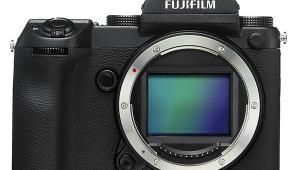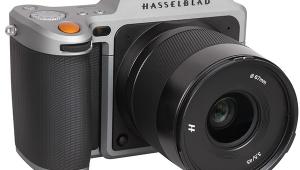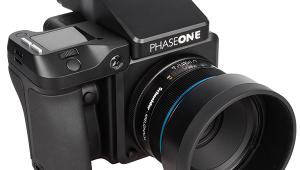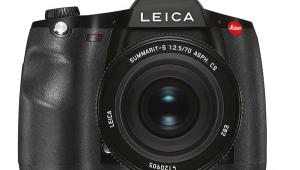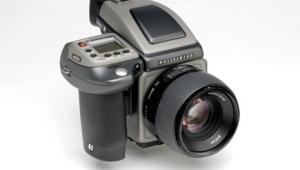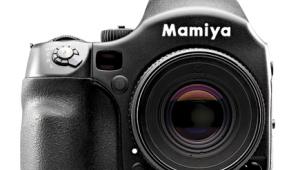Mamiya’s 645AFDII; Medium Format Quality In Digital Capture
If you want to make an immediate improvement in your photography, move up to medium format. Not just because of the larger format, which will instantly provide better resolution and quality, whether you use digital or film; more importantly, the larger viewing screen will assist you in defining your subject and refining your composition. I have seen near instant improvement occur time and again with my students who have taken this advice.
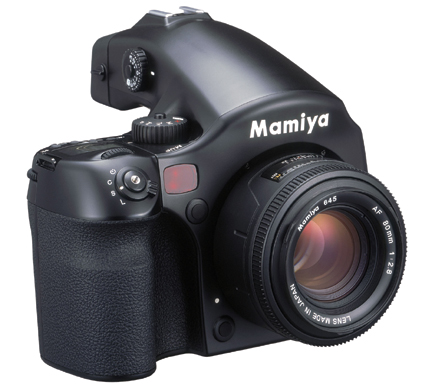 |
Why not simply go straight to large format? The statement was, if you want an immediate improvement. While 5x7" is my favorite size for many subjects, particularly landscapes and still life, there is a definite learning curve involved. Not only that, but large format is not nearly as convenient to use or carry. Many large format users are constantly looking for a reason to leave their cameras at home.
When the first generation Mamiya 645 was introduced I was not overly impressed. The camera had a number of drawbacks that made it less than desirable. I would not have traded my 1953 Rolliflex TLR for it. When the 645 Pro was introduced,
soon followed by the 645 Pro S, I was duly impressed.
|
On Location, Untethered I
|
|
 |
|
|
The Digital Option
But now digital is a viable option and the Mamiya 645AFDII allows the photographer the ability to instantly switch between rollfilm back and digital. Specifically, the 645AFDII works with the Leaf Valeo and Aptus digital backs, as well as with many popular Phase One and Imacon backs. While testing the 645AFDII I scheduled a studio session with a model. Using the film/digital capabilities of the camera I was able to capture a high-quality digital image followed immediately by a second image on black and white roll film.
Being familiar with the original 645AFD camera I was especially interested in the improvements to the II. I decided to try out the camera with a Leaf Aptus digital back. I also chose to use the camera in Untethered mode on location with the optional 20GB magazine, and in the studio (as I mentioned) in Tethered mode with a Mac G4 PowerBook.
By coincidence, the camera and back arrived as I was preparing to leave for Paducah, Kentucky. Paducah has established an aggressive artist relocation program in a 10-block area, walking distance from the historic downtown. I was interested in learning more about their program so arranged a visit. (If you would like to learn more about the program, visit their website at: www.paducaharts.com.)
|
Untethered II
|
|
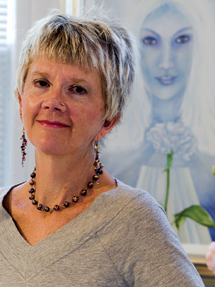 |
|
|
Mamiya 645AFDII Body And Controls
The camera is a robust piece of equipment. It is solidly built and while you should not tempt the fates by dropping it, it is made to withstand the rough usage often meted out by professional photographers. The lenses and backs, both film and digital, fit like fine machinery, inspiring confidence. All the dials are clear and enter a given setting with a positive click. They are also designed not to be accidentally changed.
There are five manual switches, or dials, on the body which control the Advance mode, Focus mode, Exposure mode, Metering mode, and exposure compensation. You can literally remove this camera from the box, insert a roll of film and six AA alkaline batteries, attach a lens, and begin working. You can set the 36 custom functions which control individual camera preferences when you have some downtime. These custom preferences include the choice of 1/3, 1/2, or full aperture/shutter speed increments, flash sync speed, dial functions, exposure compensation increments, bracketing sequence, dial direction setting, how much and what information to imprint on the negative edge, and much more.
|
Tethered To A Mac G4
|
|
 |
|
|
In addition, separate custom preferences can be set for up to three different users. For the average photographer this is not important. But if you are working in a production studio doing catalog, fashion, or product photography this is something to consider. Finally, "Quick Action" buttons have been included for fast activation of features such as multiple exposure, auto-bracketing, autoexposure, and focus lock. Overall, the design and access to all important functions is a study in aesthetics, design, and function.
This is all well and good, but how about the improved features that make the camera a practical tool? The 645AFDII claims to utilize the latest autofocusing technology with faster, more sensitive autofocus response. It is hard to gauge the accuracy of these claims, but working in low light I was impressed with how quickly the autofocus was able to track objects, especially in Continuous Focus mode. I compared it to a high-end digital SLR in the same situation and it appeared to be at least as fast, and perhaps a bit faster.
|
Main Screen
|
|
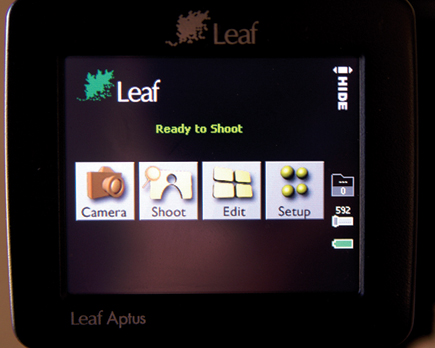 |
|
|
Another welcome improvement is the mirror lockup. Instead of the mechanical style lockup found on most cameras, including the previous 645AFD, the II has an electronic lockup button with auto-cancel. Other improvements over the first generation AFD include an AFL (autofocus lock), which can be changed to AEL (autoexposure lock) in the custom function menu. It is easily accessible to the middle finger of the right hand while depressing the shutter release button halfway down with the index finger. And not to be overlooked is the ability to easily change the exposure compensation from 1/3 to 1/2 stop increments.
While it is not an improvement, per se, it should be noted that Mamiya medium format optics are excellent. The autofocus lenses are exceptionally sharp with good overall color rendition and contrast. I was especially fortunate in that Mamiya USA saw fit to send a non-autofocus lens as well, the 120mm f/4 Macro MF. I love the ability to focus close with medium format, and this lens gets down to the nitty-gritty. In fact, glamour photography, tabletop, and portraiture all require the ability to focus more closely than most lenses are capable.


